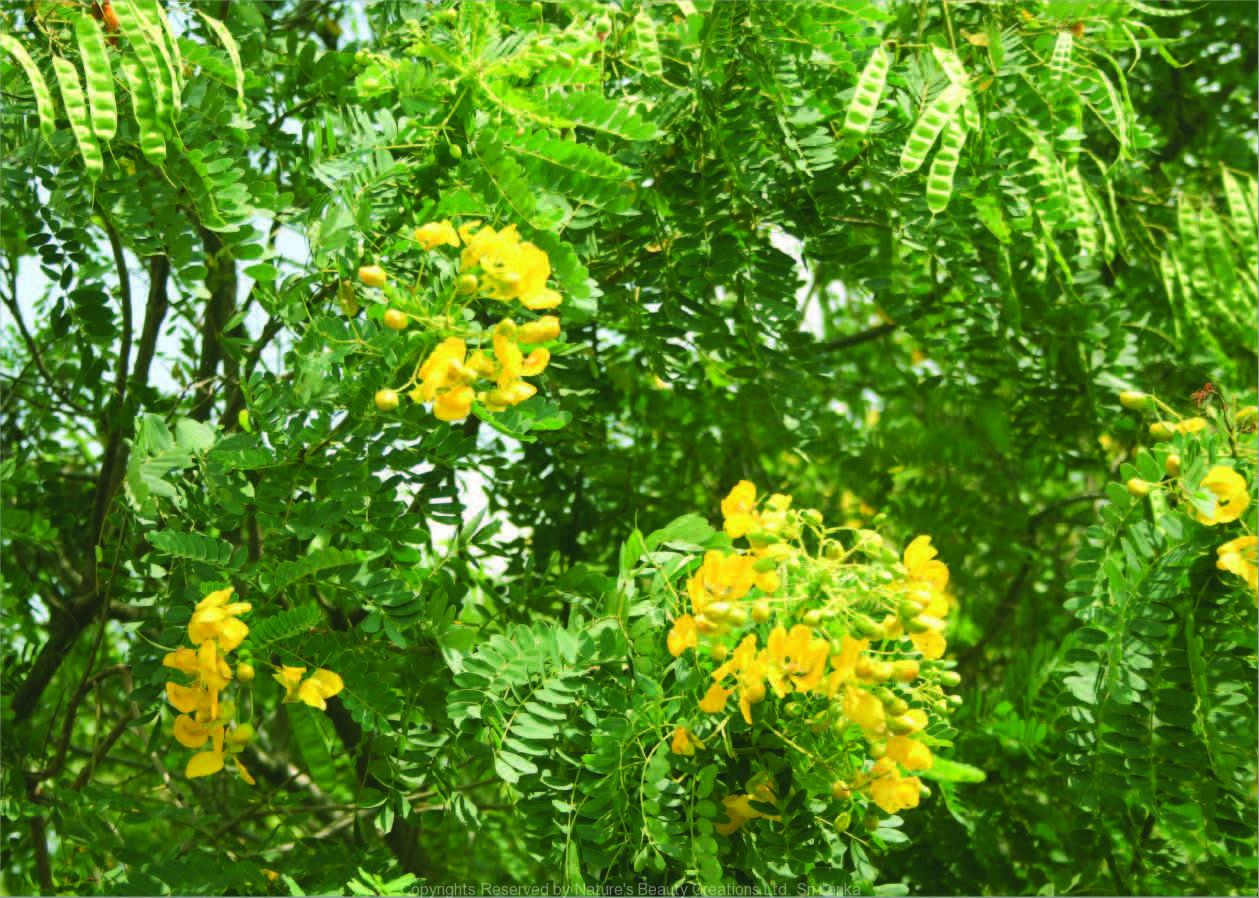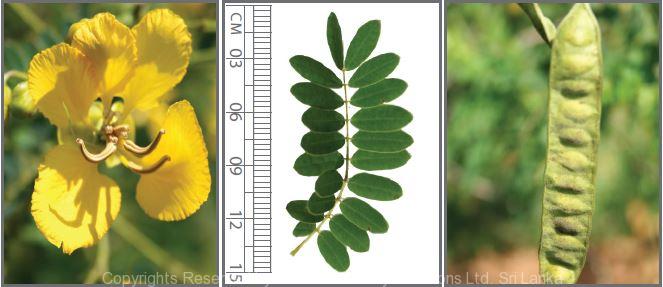

Traditional Knowledge
Useful plant parts :
Leaf, seed, flower and flower bud
Uses in traditional medicine :
- Young leaves prepared as a vegetable are a laxative and are used to treat constipation
- Drink prepared from dried flowers and flower buds is used to treat diabetes and to improve complexion
- Poultice prepared from seeds is applied around the eyes to treat conjunctivitis
Scientific Research
Chemical constituents:
Flavonoids: kaempferol, quercetin luteolin and their glycosides from aerial parts; phthalic acid derivatives from leaves
Bioactivity :
Alcohol, aqueous and acetone extracts of flowers: antibacterial, antihyperlipidaemic, anti-inflammatory, antidiabetic, antioxidative; ethanol extract of roots: nephroprotective; leaf extract: protection against alcohol induced oxidative stress and free radical mediated oxidative stress, anticancer, antihyperglycaemic, hypolipidaemic
Clinical:
References : Annie, S. et al., (2005), Effect of Cassia auriculata Linn. root extract on cisplatin and gentamicin-induced renal injury, Phytomedicine, 12(8), 555-60. Gupta, S. et al., (2009), Antihyperglycemic and hypolipidemic activity of aqueous extract of Cassia auriculata L. leaves in experimental diabetes, J Ethnopharmacol, 123(3), 499-503. Habtemariam, S., (2013), Antihyperlipidemic components of Cassia auriculata aerial parts: identification through in vitro studies, Phytother Res, 27(1), 152-5. Maneemegalai, S. and Naveen, T., (2010), Evaluation of Antibacterial Activity of Flower Extracts of Cassia auriculata, Ethnobotanical Leaflets, 1, 3. Manogaran, S. And Sulochana, N., (2004), Anti-inflammatory activity of Cassia aauriculata, Anc Sci Life, 24(2), 65-7. Pari, L. and Latha, M., (2002), Antidiabetic Activity of Cassia auriculata Flowers: Effect on Lipid Peroxidation in Streptozotocin Diabetes Rats, Pharmaceutical Biology, 40(7), 512-517. Prasanna, R. et al., (2009), Anti-cancer effect of Cassia auriculata leaf extract in vitro through cell cycle arrest and induction of apoptosis in human breast and larynx cancer cell lines, Cell Biology International, 33(2), 127-134. Rao, G. N. et al., (2000), Constituents of Cassia auriculata, Fitoterapia, 71(1), 82-3. Rajagopal, S. K. et al, (2003), Activity of Cassia auriculata leaf extract in rats with alcoholic liver injury, Journal of Nutritional Biochemistry, 14(8), 452-458. Vijayaraj, P. et al., (2013), Antihyperlipidemic activity of Cassia auriculata flowers in triton WR 1339 induced hyperlipidemic rats, Exp Toxicol Pathol, 65(1-2), 135-41
Copyrights Reserved By
Natures Beauty Creations




